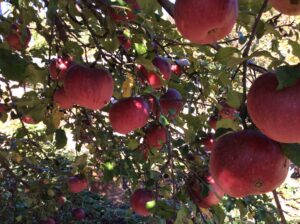Are you confused about what “sustainable” really means? There has been volumes written about this subject, yet its very essence is elusive. An unreliable approach to sustainability is often on what manufactured appliance to purchase, type of methods to implement or how to define the word itself. This can result in a focus on minutia, failure to be inclusive and diminished progress. There is a better path! The following sustainable landscape principles allow the freedom to explore, discover and grow without getting mired down in details!
Sustainable Landscape Guidelines Simplified
- Mission Possible: You have a reason to do this, so declare your intent by creating a mission

The outcomes for organizations that adopt guiding principals for sustainable landscapes includes fostering inclusion, greater diversity and producing abundance.
statement. Will the landscape reflect your organization’s core values? While your mission statement might be one sentence, your vision and objectives might include reduced water use, fewer applications of pesticides, smaller high-maintenance lawn areas and a more aesthetic landscape. Have you considered the positive press created by this endeavor?
- Identify the Players: Who are all of the decision makers? Who will this landscape serve? Determining all of the people involved may require detective work in a large organization. Stakeholders who reach consensus and are aligned will be successful and maintain sustainable relationships. Will leaders be empowered to research, test and implement the project?
- Start at the End: A sustainable landscape will be one that is durable and long lasting. The life span of the project is important so that inputs, costs, maintenance and benefit creation can be accurately accessed. Long-term maintenance of the completed project often requires development of new methods, different tools and updated skills for the people doing the work. For instance, instead of trimming shrubs into “balls” or other shapes, rejuvenation pruning at the base of the plant can return vigor and appealing natural shape.
- It’s All About the Benefits: Benefits of a sustainable landscape must outweigh the costs. Creation of benefits is the inducement to provide input to and maintenance of the landscape. What measurable and intangible benefits will be derived by the owners and users of the proposed landscape? Examples of benefits may include less work, functional outdoor living areas, water conservation, production of foods and herbs, erosion control and aesthetics.
- Multiple Dividends: Each action in a sustainable landscape, even maintenance, should produce multiple dividends/benefits. Example: when mowing lawn areas; leaving the grass clippings where they fall reduces the need for fertilizer, saves disposal expenses, reduces time needed for the job, trims overall cost and is easy on the environment – at least five dividends/benefits created by just one action.
- Thriving Prosperity: Construction, use and maintenance of a sustainable landscape creates an overflow of benefits for the community and the planet. Sustainable landscapes enhance the environment as they produce abundance and resiliency. What overflow of benefits will your landscape produce? Examples of this include infiltration of precipitation to keep your neighbor’s basement dry and improve water quality in the nearby lake, food grown on your property that you share with others, less need for power equipment that drowns out the sound of nature and pollutes the air and re-purposing organic materials by diverting them from the waste stream puts valuable nutrients to work close to home.
Incorporating these guiding principles is an important first step in your sustainable landscape journey. Think of the guidelines as the infrastructure of a solid foundation to learn, develop, share and succeed. When your group engages the sustainable landscape principles they are affirming their commitment to the organization, to each other and to shared success. Now that is sustainable!
